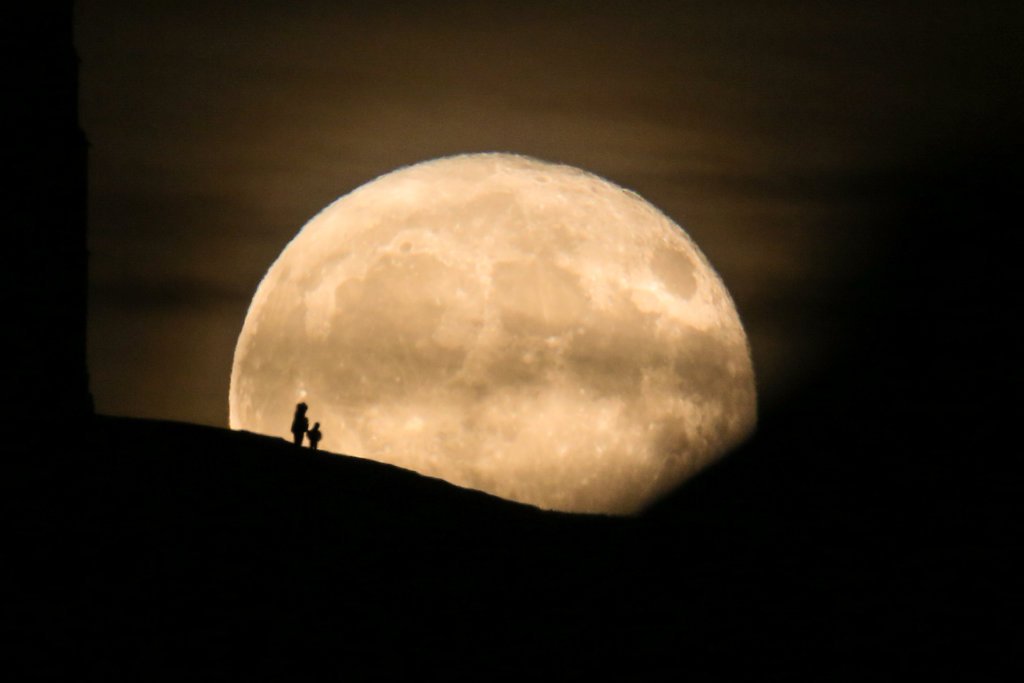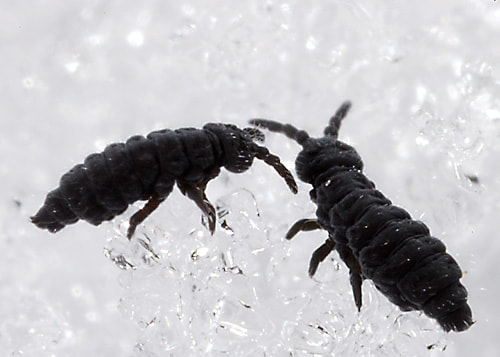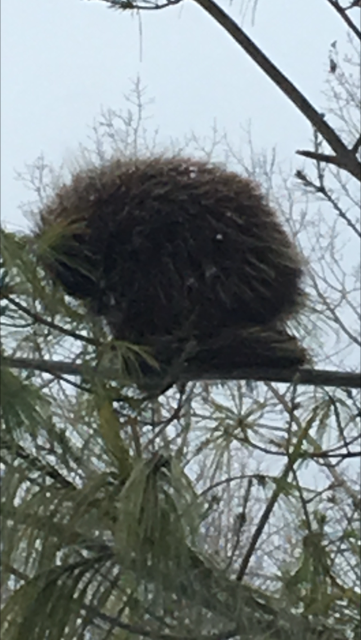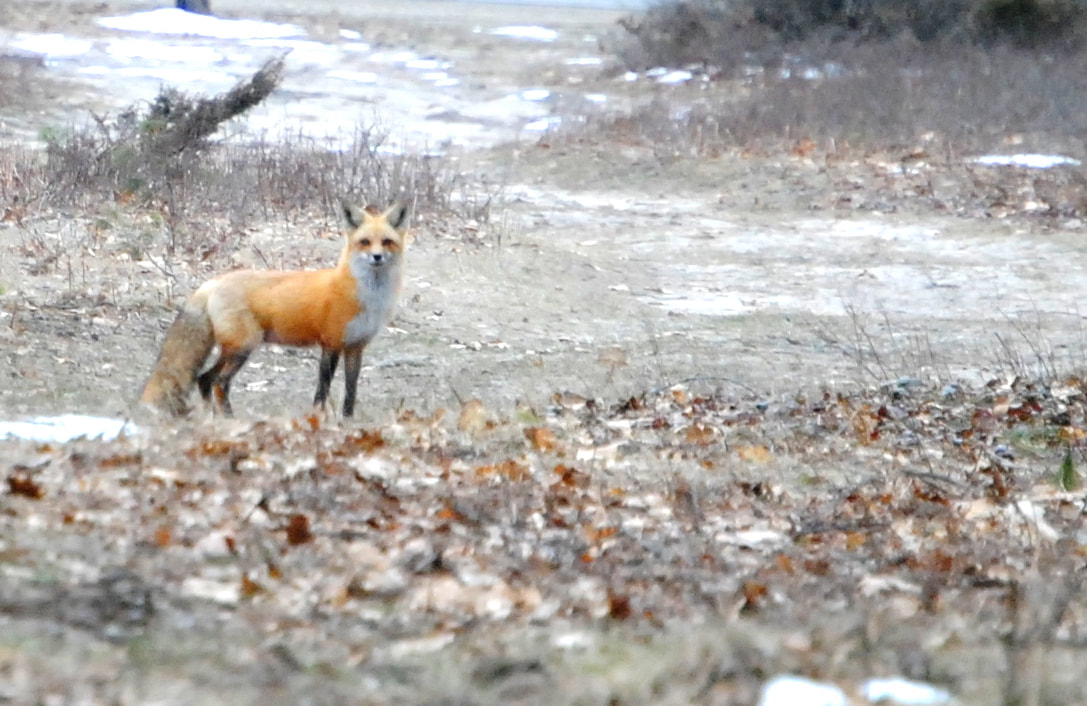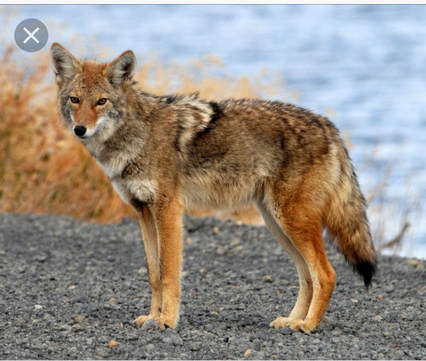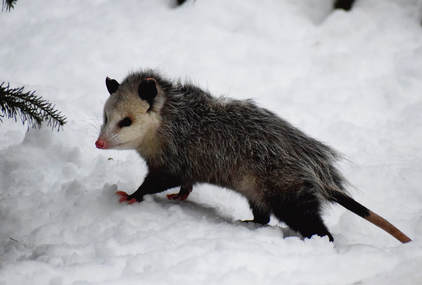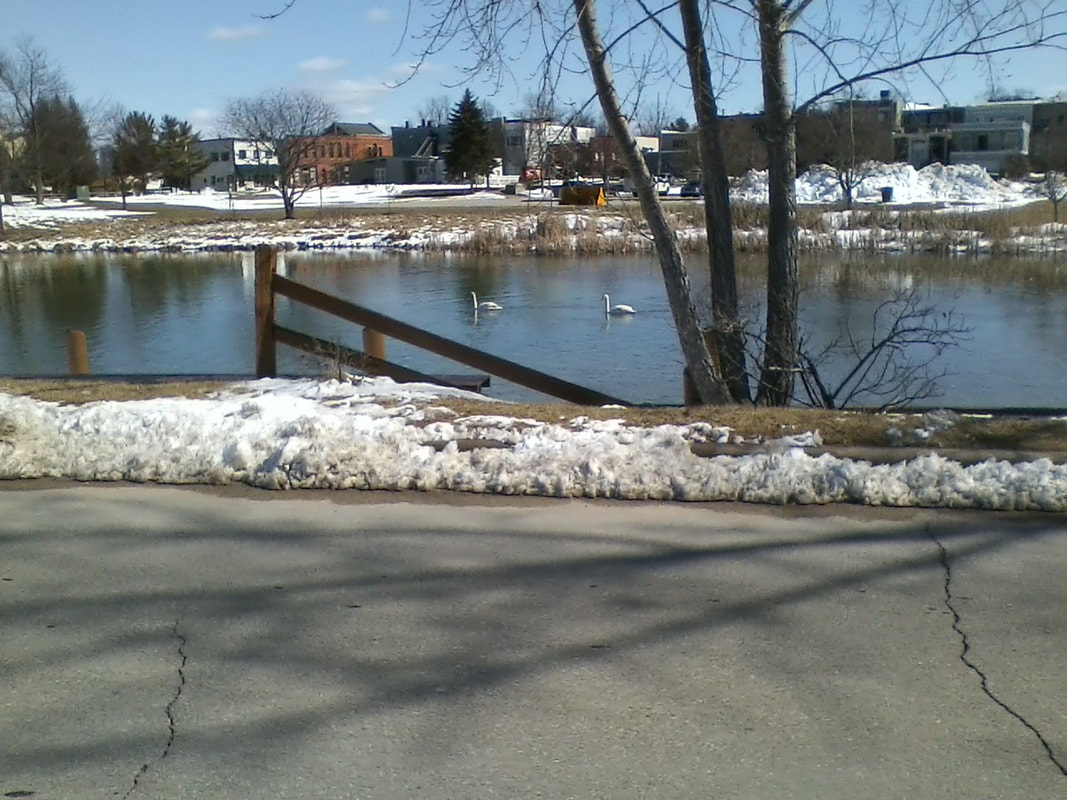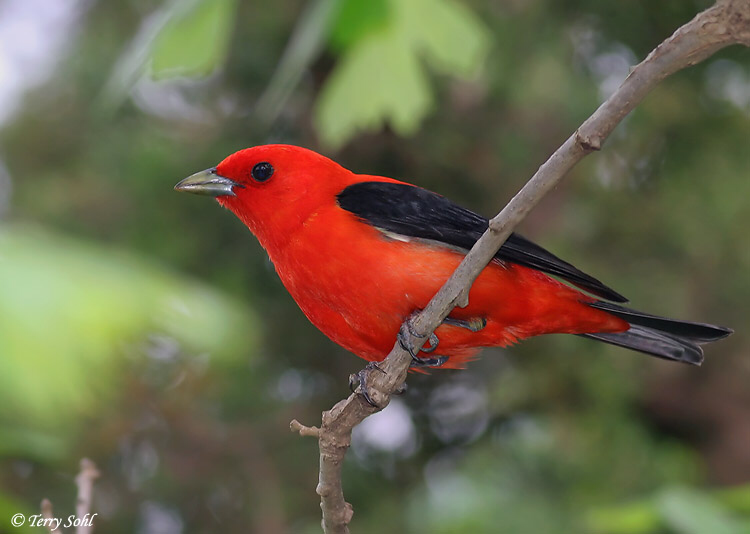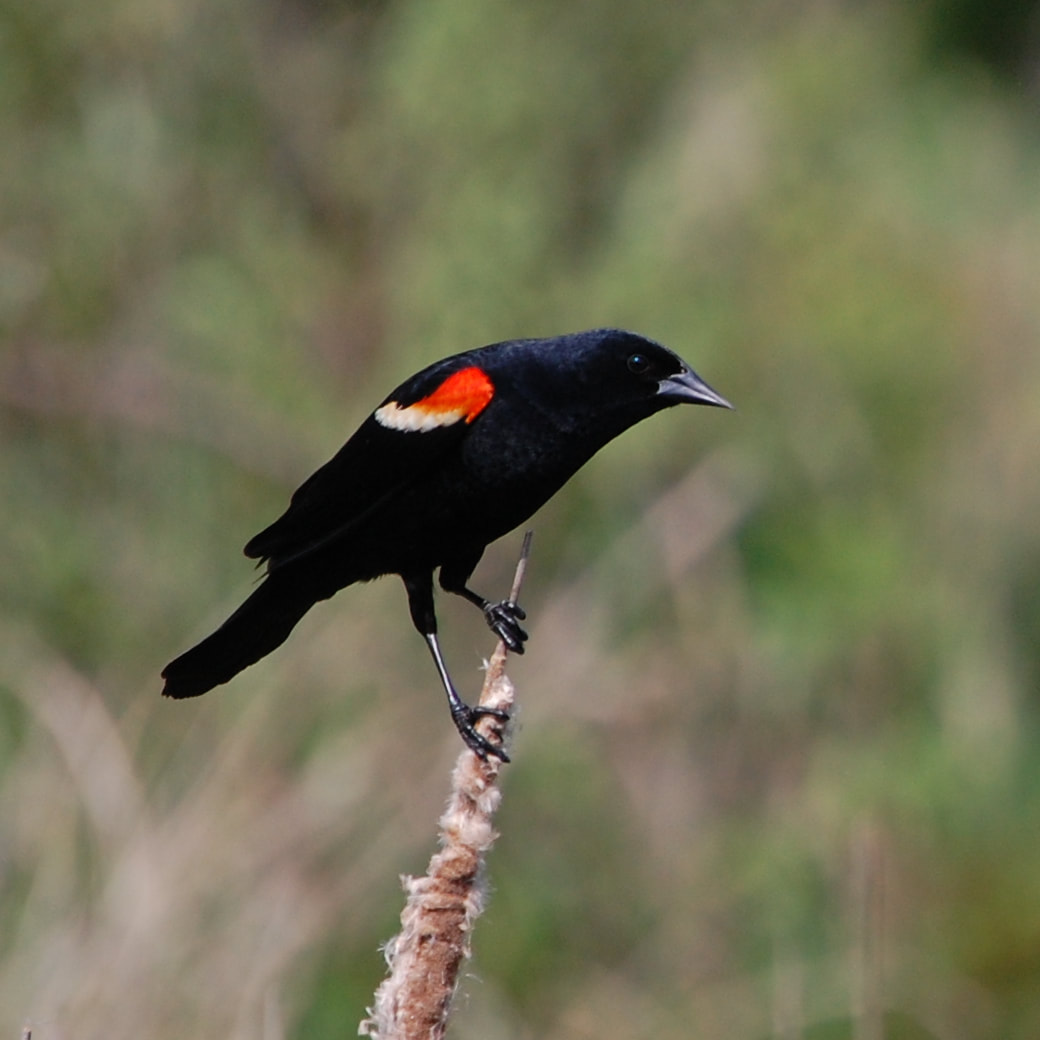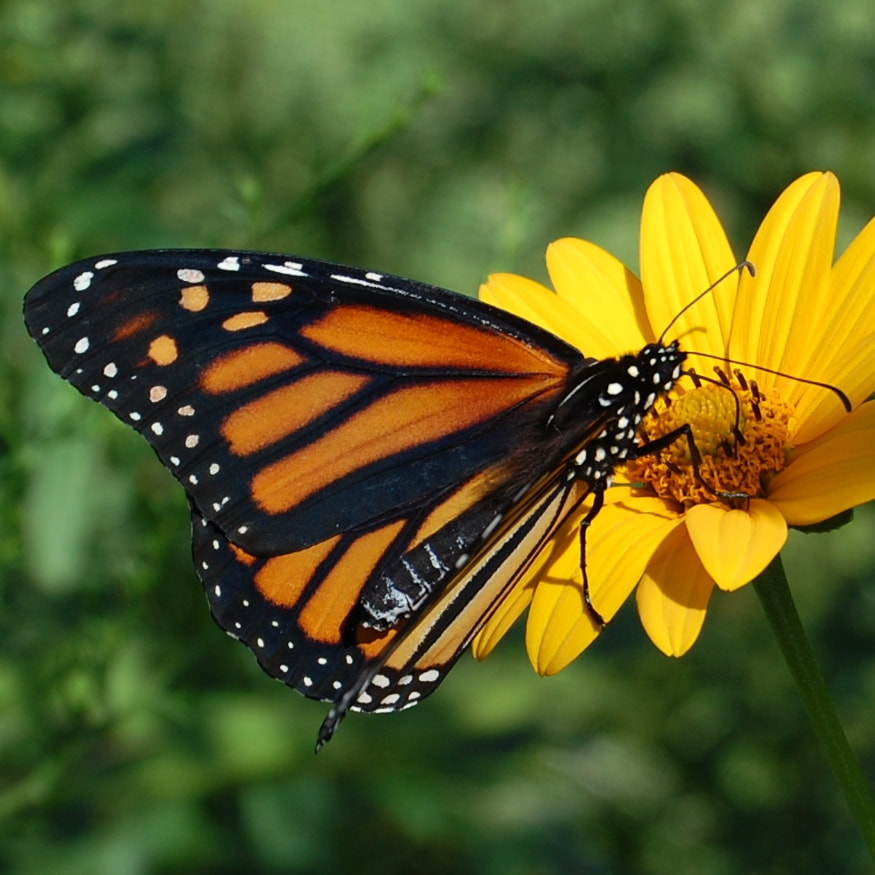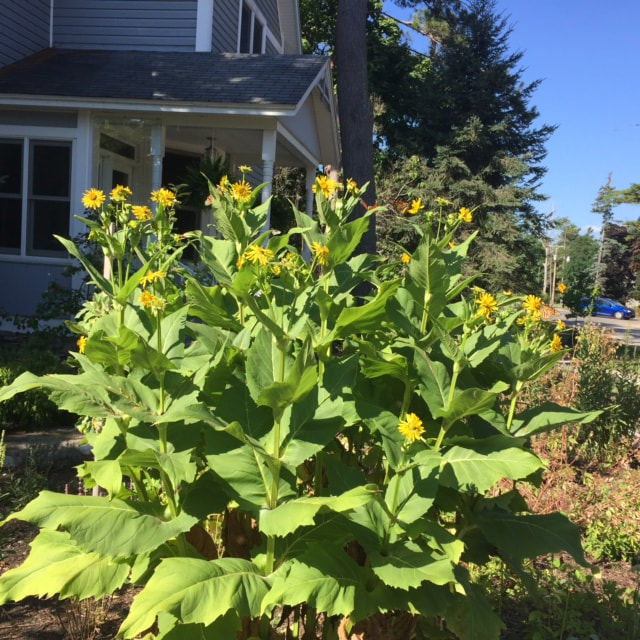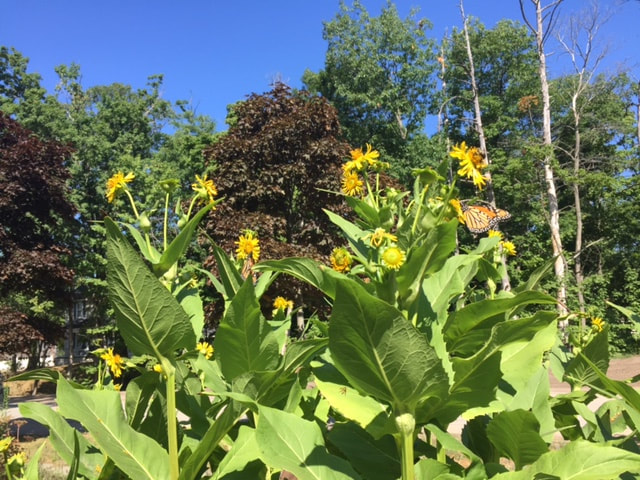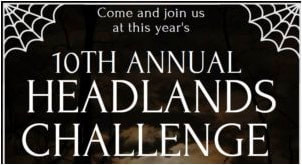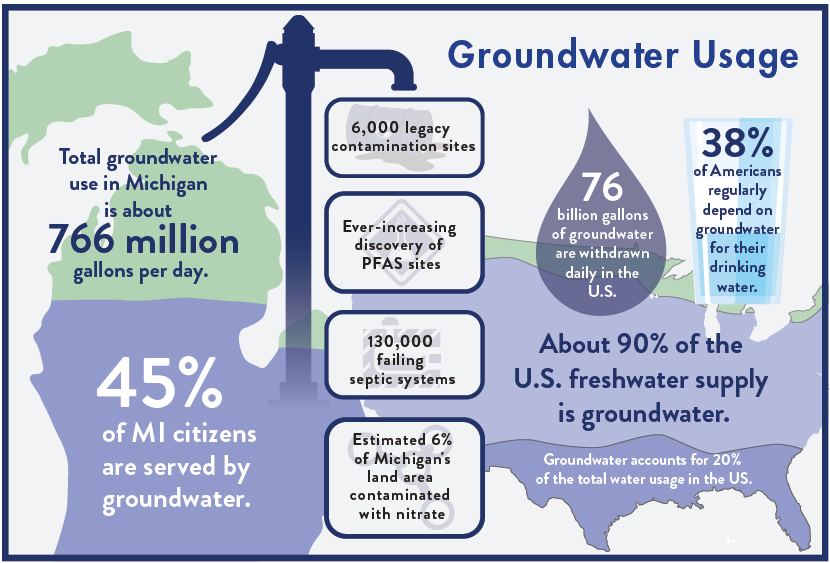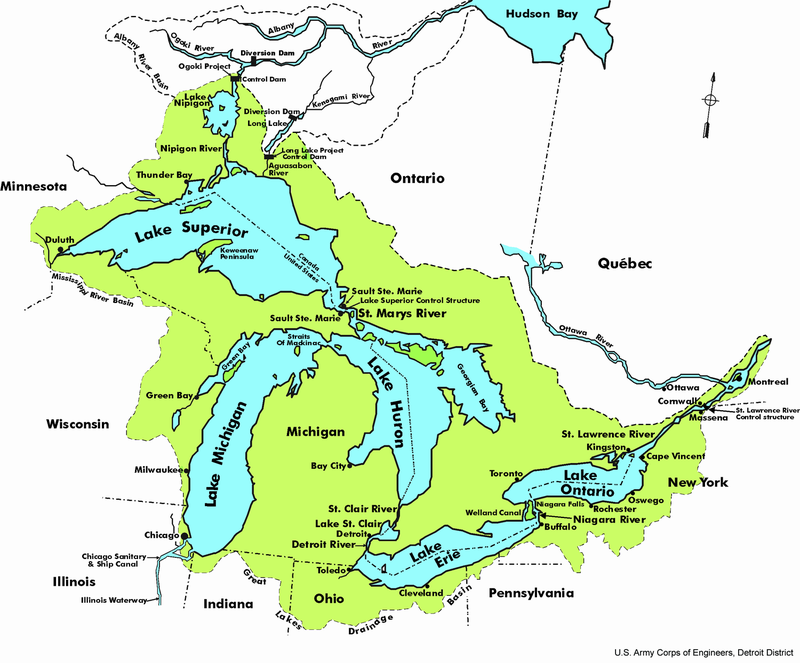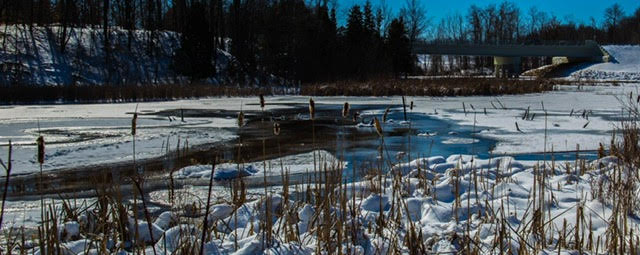JANUARY 2018
January 4 - This local porcupine is taking a nap north of town. The porcupine is classified as a rodent. It has as many as 30,000 quills. It cannot "shoot" its quills, but lashes out with it's tail. In the winter porcupines eat bark and often climb trees to find food or sleep. It is primarily nocturnal, but will forage for food in the day. -Gary Stauffer
January 6 - Be on the lookout for little black moving specks in the snow on any day that is warmer than 25 degrees. As we enter days of freezing cold and then a mild thaw, snow fleas will begin to make an appearance. Snow fleas (also known as Springtails) are soil decomposers, but are able to withstand freezing temperatures, allowing us to notice them more on top of thawing snow. -Lauren Dake.
Rabbit redux: This past fall we had six or seven friendly rabbits that always greeted us as we came down our driveway. By the first part of December, we did not see a single rabbit. One afternoon as I walked out on our point, all the birds were very quiet. I looked up and saw a beautiful bald eagle circling the wooded area, and wondered if this predator had anything to do with the disappearance of the rabbits. January 7 update. This past week as we drove down our driveway, a lone rabbit greeted us. I guess the predator missed one. -Chuck Schular
January 11 - While driving south on US 31 on January 10th around 5pm, a snowy owl was spotted flying across the roadway near Maple Bay. To see the wing span and the size of this bird at a close distance was amazing! -Dianne Richter
Note: We seem to be having a snowy owl invasion in the village! Check out their habits and their sounds at Audubon.org or www.birds.cornell.edu.
January 16 - At 9:30 a.m. a mature bald eagle landed in a tall pine tree off Ottawa Street, perched on a top branch and proceeded to devour a dark colored duck. After a series of phone calls, several neighbors took to their cameras and binoculars for a good viewing before it finished the meal and flew
south. -Ottawa Street neighbors
January 21 - Today was a true “spring thaw” day, as beautifully described by Aldo Leopold in Sand County Almanac nearly 50 years ago as he explored his Wisconsin farm. (copy in our library) As I enjoyed our own spring thaw day, walking along the river I encountered Traverse City visitors Bret and Ezra. Father and son were observing the ducks, gulls, and other wildlife along the river, and were excited to learn that bald eagles, snowy owls, and hawks are also frequent visitors there. -Royce Ragland
January 31 - A rare astronomical event will occur early morning: a lunar eclipse, a Blue moon, and a Super moon. A Blue Moon is the second full moon in a month, also known as a Blood Moon due to the color it can take on. A Super Moon occurs when the moon reaches its closest approach to Earth in a single orbit, and the moon can appear up to 14% larger and 30% brighter than normal, according to Space.com.
Note For Kids: NASA’s Space Place website is a NASA website for elementary school-aged kids, their teachers, and their parents.
Special Almanac posting by Bob Moler
We will have a calendrical coincidence on January 31st along with a natural event, and just missing another natural event all having to do with the Moon.
The first is that one of the full moons in January fits the definition for a "blue moon", the second full moon in a month. Of course the Moon doesn't actually turn blue. It doesn't really care. Since February is shorter than a lunation, a lunar month, it will not have a full moon. However March will have two full moons like January.
The second is a real event. The Moon being opposite the Sun in the sky, the definition of a full moon, will pass into the Earth's shadow causing a lunar eclipse or eclipse of the Moon. In this case, a total eclipse. A lunar eclipse of some type occurs in about one in six full moons. We only have to be on the night side of the Earth to see it. That's the rub this time, because the eclipse will be in progress at sunrise. The partial phase starts at 6:48 a.m. From about 6:30 on the upper left part of the Moon will appear dusky as the Moon sinks deeper in the Earth's outer shadow, where the Sun is only partially blocked. The Moon will sink farther and farther into the Earth's inner shadow called the umbra until at 7:51 a.m. it will be totally immersed. By then the sky will be quite bright, with sunrise to occur at 8:02. The Moon should completely disappear and will set unseen at 8:04. Folks a few states west of us will see, more than likely, a coppery colored totally eclipsed Moon. A TV preacher some years ago called it a Blood Moon, hoping to sell books about the end times.
The color comes from the sum of all the sunrise and sunsets happening on Earth at that instant. The red sunrise we see is caused by the blue light being scattered out of the Sun's light by molecules in the Earth's atmosphere. It gives us the blue sky. Our atmosphere also bends the Sun's light. When we see the full disc of the Sun just clear the horizon, it's still actually fully below the horizon. The light of the sunrise that passes over our heads continues on, being bent further and becoming redder, and fills the Earth's shadow by the time it reaches the Moon's distance, making the Moon red. Volcanic ash in the upper atmosphere can make the Moon almost disappear during totality.
This full moon is also a so-called "Super Moon". These occur when the full moon is nearest the Earth in its monthly orbit of the Earth. January first's full moon was the closest of the year, you might say a super duper moon. The Moon reached its perigee, closest point or 221,581 miles away 5 hours before the Moon was officially full. This time perigee is the day before full, about 1,500 miles farther away. These are measured center to center. The closest an Elk Rapids observer will be to the Moon on the 31st will be at about 12:30 a.m. at 219,920 miles, subtracting most of the Earth's radius. Of course the Moon won't look that big being high in the south then. By moon set it will retreat to 223,778 miles from an Elk Rapids observer. The increased apparent size of the rising or setting Sun or Moon is an optical illusion. The Moon is closer to us when high in the sky than when on the horizon.
The next lunar eclipse visible to us is next year, on the night of January 20-21, 2019.
Bob Moler ,NASA/JPL Solar System Ambassadors Volunteer
ISEA Schoolship Volunteer Instructor
Ephemeris web page: ephemeris.bjmoler.org
Blog: bobmoler.wordpress.com
Bob Moler's Ephemeris weekdays on Interlochen Public Radio (Volunteer)
Also streaming live on the Internet at ipr.interlochen.org
6:19 a.m. ET on News IPR (This is a new time):
WICA 91.5 FM, Traverse City;
WLNM FM 98.7 FM, Manistee;
WHBP FM 90.1 FM, Harbor Springs - Petoskey
6:58 a.m. ET on Classical IPR:
WIAA 88.7FM, Interlochen;
94.7 FM Traverse City,
WIAB 88.5 FM, Mackinaw City;
WICV 100.9 FM, East Jordan - Charlevoix
Photo below left: Super Moon
Photo below middle: Snow Fleas
Photo below right: Porcupine - photo by Gary Stauffer
January 6 - Be on the lookout for little black moving specks in the snow on any day that is warmer than 25 degrees. As we enter days of freezing cold and then a mild thaw, snow fleas will begin to make an appearance. Snow fleas (also known as Springtails) are soil decomposers, but are able to withstand freezing temperatures, allowing us to notice them more on top of thawing snow. -Lauren Dake.
Rabbit redux: This past fall we had six or seven friendly rabbits that always greeted us as we came down our driveway. By the first part of December, we did not see a single rabbit. One afternoon as I walked out on our point, all the birds were very quiet. I looked up and saw a beautiful bald eagle circling the wooded area, and wondered if this predator had anything to do with the disappearance of the rabbits. January 7 update. This past week as we drove down our driveway, a lone rabbit greeted us. I guess the predator missed one. -Chuck Schular
January 11 - While driving south on US 31 on January 10th around 5pm, a snowy owl was spotted flying across the roadway near Maple Bay. To see the wing span and the size of this bird at a close distance was amazing! -Dianne Richter
Note: We seem to be having a snowy owl invasion in the village! Check out their habits and their sounds at Audubon.org or www.birds.cornell.edu.
January 16 - At 9:30 a.m. a mature bald eagle landed in a tall pine tree off Ottawa Street, perched on a top branch and proceeded to devour a dark colored duck. After a series of phone calls, several neighbors took to their cameras and binoculars for a good viewing before it finished the meal and flew
south. -Ottawa Street neighbors
January 21 - Today was a true “spring thaw” day, as beautifully described by Aldo Leopold in Sand County Almanac nearly 50 years ago as he explored his Wisconsin farm. (copy in our library) As I enjoyed our own spring thaw day, walking along the river I encountered Traverse City visitors Bret and Ezra. Father and son were observing the ducks, gulls, and other wildlife along the river, and were excited to learn that bald eagles, snowy owls, and hawks are also frequent visitors there. -Royce Ragland
January 31 - A rare astronomical event will occur early morning: a lunar eclipse, a Blue moon, and a Super moon. A Blue Moon is the second full moon in a month, also known as a Blood Moon due to the color it can take on. A Super Moon occurs when the moon reaches its closest approach to Earth in a single orbit, and the moon can appear up to 14% larger and 30% brighter than normal, according to Space.com.
Note For Kids: NASA’s Space Place website is a NASA website for elementary school-aged kids, their teachers, and their parents.
Special Almanac posting by Bob Moler
We will have a calendrical coincidence on January 31st along with a natural event, and just missing another natural event all having to do with the Moon.
The first is that one of the full moons in January fits the definition for a "blue moon", the second full moon in a month. Of course the Moon doesn't actually turn blue. It doesn't really care. Since February is shorter than a lunation, a lunar month, it will not have a full moon. However March will have two full moons like January.
The second is a real event. The Moon being opposite the Sun in the sky, the definition of a full moon, will pass into the Earth's shadow causing a lunar eclipse or eclipse of the Moon. In this case, a total eclipse. A lunar eclipse of some type occurs in about one in six full moons. We only have to be on the night side of the Earth to see it. That's the rub this time, because the eclipse will be in progress at sunrise. The partial phase starts at 6:48 a.m. From about 6:30 on the upper left part of the Moon will appear dusky as the Moon sinks deeper in the Earth's outer shadow, where the Sun is only partially blocked. The Moon will sink farther and farther into the Earth's inner shadow called the umbra until at 7:51 a.m. it will be totally immersed. By then the sky will be quite bright, with sunrise to occur at 8:02. The Moon should completely disappear and will set unseen at 8:04. Folks a few states west of us will see, more than likely, a coppery colored totally eclipsed Moon. A TV preacher some years ago called it a Blood Moon, hoping to sell books about the end times.
The color comes from the sum of all the sunrise and sunsets happening on Earth at that instant. The red sunrise we see is caused by the blue light being scattered out of the Sun's light by molecules in the Earth's atmosphere. It gives us the blue sky. Our atmosphere also bends the Sun's light. When we see the full disc of the Sun just clear the horizon, it's still actually fully below the horizon. The light of the sunrise that passes over our heads continues on, being bent further and becoming redder, and fills the Earth's shadow by the time it reaches the Moon's distance, making the Moon red. Volcanic ash in the upper atmosphere can make the Moon almost disappear during totality.
This full moon is also a so-called "Super Moon". These occur when the full moon is nearest the Earth in its monthly orbit of the Earth. January first's full moon was the closest of the year, you might say a super duper moon. The Moon reached its perigee, closest point or 221,581 miles away 5 hours before the Moon was officially full. This time perigee is the day before full, about 1,500 miles farther away. These are measured center to center. The closest an Elk Rapids observer will be to the Moon on the 31st will be at about 12:30 a.m. at 219,920 miles, subtracting most of the Earth's radius. Of course the Moon won't look that big being high in the south then. By moon set it will retreat to 223,778 miles from an Elk Rapids observer. The increased apparent size of the rising or setting Sun or Moon is an optical illusion. The Moon is closer to us when high in the sky than when on the horizon.
The next lunar eclipse visible to us is next year, on the night of January 20-21, 2019.
Bob Moler ,NASA/JPL Solar System Ambassadors Volunteer
ISEA Schoolship Volunteer Instructor
Ephemeris web page: ephemeris.bjmoler.org
Blog: bobmoler.wordpress.com
Bob Moler's Ephemeris weekdays on Interlochen Public Radio (Volunteer)
Also streaming live on the Internet at ipr.interlochen.org
6:19 a.m. ET on News IPR (This is a new time):
WICA 91.5 FM, Traverse City;
WLNM FM 98.7 FM, Manistee;
WHBP FM 90.1 FM, Harbor Springs - Petoskey
6:58 a.m. ET on Classical IPR:
WIAA 88.7FM, Interlochen;
94.7 FM Traverse City,
WIAB 88.5 FM, Mackinaw City;
WICV 100.9 FM, East Jordan - Charlevoix
Photo below left: Super Moon
Photo below middle: Snow Fleas
Photo below right: Porcupine - photo by Gary Stauffer
FEBRUARY 2018
|
February 2018 is The Year of the Bird - a 12-month celebration of birds and raising awareness of the threats birds face around the world. Organized by National Geographic, the National Audubon Society, the Cornell Lab of Ornithology, Bird Life International and dozens of other partners, nature centers, conservation groups. Through 12 months of storytelling, science research and conservation efforts, these efforts will examine how our changing environment is driving dramatic losses among bird species around the globe and highlight what we can do to help bring birds back. Each month will include a call to action. Every February participating organizations participate in the Great Backyard Bird Count (GBBC). Source: National Audubon Society. www.audubon.org
Maybe in February 2019 we can do a GBBC in Elk Rapids! -Royce Ragland February 1 - One day last week while sipping his morning coffee, my husband was watching a Hairy Woodpecker hammering the suet cake on the tree outside our window in Meadowview Commons. In seconds a hunting hawk swooped in, taking the woodpecker to the ground. After 3 or 4 stomps with its talons, the hawk sailed away with the dying woodpecker dangling. This happened in seconds, so the hawk's identity wasn't verified, likely the more common Red-Tailed Hawk. Part of Life's Circle in an instant. -Linda Travis February 14 - “That’s a fox out there!” Walking along the shoreline, I was surprised when a driver pulled over and pointed to a dark spot moving across the frozen bay. It really was a fox. -Terri Reisig February 15 - Why Birds Matter. “It’s not just what they do for the environment-it’s what they do for our souls”. National Geographic Magazine, February 2018. -Copy available in Elk Rapids District Library. |
MARCH 2018
|
March 4 - I was enjoying my morning infusion of caffeine when I heard what I thought was the howling of a neighborhood dog. On looking to see what was going on I was pleasantly surprised to see a beautiful Coyote on our beach not 20 yards from our deck door. It was baying at nothing in particular then wandered along the shore and out onto the Elk Lake ice. It trotted out about 200 yards then turned left and proceeded out of sight toward White Birch Lodge. The next day I saw it coming across the lake but it stopped about half way and turned around and went back the way it had come. -Wally Hibbard
March 10 - "A sap-run is the sweet good-bye of winter. It is the fruit of the equal marriage of the sun and frost". John Burroughs, Signs and Seasons, 1886. The public is invited to see this process in action. Come out to Maple Bay Farm, 3 miles south of Elk Rapids on Saturday, March 24, from 1-3 pm. Hosted by the Grand Traverse Regional Land Conservancy. This family friendly event will include syrup making, tree tapping and syrup treats. -Gary Stauffer, preserve steward at Maple Bay Farm. March 12 - Imagine our surprise when we looked out our window on a sunny winter afternoon and saw an opossum ranging around the commons! I looked them up and found that opossums don’t hibernate and are generally nocturnal. The exception is when it’s really cold at night and warmer in the daytime. We’ve seen him/her numbers of times this past two weeks and have named “our” opossum BB for Bay Breeze. They do many good things, like eat pests, grubs, roadkill, and have a very Low potential for rabies. Opossums are our friends! -Kim Sibilsky |
APRIL 2018
|
April 8 - I saw these trumpeter swans on the 'Kids Fishing Pond' across from the Edward C. Grace Memorial Harbor on a Sunday afternoon walk to the Library. -Janice Shurte
Here is a bit of research from the internet: Trumpeter swans are all white with a black bill and face. They are the world's largest waterfowl. They prefer nesting sites with little human disturbance. They coexist with geese and ducks. Their 'call' is a resonating hollow, nasal honking. They are thought to mate for life. Mute swans are identified by an orange bill, black face and black knob at the base of the bill. They are an aggressive swan species, from Europe, known to drive Trumpeter swans and other waterfowl out of their wetland breeding areas. (these are what we see most of the time) 50 years ago Trumpeter swans were perched on the brink of extinction. Today government and conservation organizations and Indians are working to reintroduce them and it is successful in Michigan. There has been a dramatic change from none in 1986 to 756 Trumpeters now in Michigan waters. They hope shortly to remove them from the State threatened and endangered species. -Janice Shurte |
MAY 2018
|
May 26 - On Saturday, May 26, GreenER and Grand Traverse Regional Land Conservancy held a guided hike at the site of former Camp Maplehurst.
The 70+ hikers, conservancy staff and GreenER committee members heard updates on the status of acquiring the property, had an up close look at the beautiful acreage, old orchards and enclosed lake, and learned of plans to create hiking trails and highlight other natural attractions. Nature Note from conservancy staffer Kate Peason: Before leaving the property, we spotted a Scarlet Tanager in the oaks near the entrance to the forest. I spent some time this morning reading about the brilliantly colored bird and learned that they are vulnerable to the loss of habitat. Apparently breeding pairs require quite large tracts of forest to nest. So glad that over 380 acres at Maplehurst is now protected forever for the gorgeous Scarlet Tanager! I am THRILLED that the Scarlet Tanager has a secure home at Maplehurst. Our late staffer Abby Gartland loved that species so much that she named her daughter Scarlet. The only other place that I’ve heard of one appearing in our area is Arcadia Dunes. Wonderful! Photo right: Scarlet Tanager |
JUNE 2018
|
June 9 - This year is a forest tent caterpillar year. This is a native insect with abundant populations on 10-15 year cycles, and that means a good year for birds that rely on the protein these insects provide. There are two species in our region in particular who are associated with spiny caterpillars: the black-billed and yellow-billed cuckoo. These uncommon and elusive birds with a quiet call are not often seen or heard, and interestingly they have been said to be a harbinger of rain, so for that reason according to the Cornell Lab of Ornithology website they are sometimes called "rain crows". Listen for them in shrubby edges of forests in the evenings and hopefully you'll hear their enigmatic vocalizations during the summer months. I recently heard a black-billed cuckoo--- just before a rainstorm! -Angie Lucas, staff naturalist, GTRLC.
June DNR posting - Hungry forest tent caterpillars are munching leaves in forests and woodlots across Michigan, according to a news release from the state Department of Natural Resources. The caterpillars eat leaves from sugar maple, aspen and oaks and leave strands of webbing in the trees. The insects are natives and occur in outbreaks every 10 to 15 years. The most recent outbreaks peaked in 2002 and 2010, according to the news release. The caterpillars have been reported in the Lower Peninsula and the eastern Upper Peninsula. Outbreaks generally last two or three years, according to the news release, and some areas are in their second or third year. Forest tent caterpillars rarely kills trees unless the tree has some other problem -Scott Lint, DNR forest health specialist. To find out more about forest pests: www.michigan.gov/foresthealth. June-week of 16-23-Following reports of red-winged blackbird encounters near Kid’s Pond Kid’s Pond, with unsuspecting pedestrians being aggressively pursued, here is some helpful background: To defend his territory and attract a mate, male perches on high stalk with feathers fluffed out and tail partly spread, lifts leading edge of wing so that red shoulder patches are prominent, and sings. The nest is built by the female, made of grass, lashed to reeds or small bushes in marsh growth such as cattails. Both male and female are very aggressive in nesting territory, attacking larger birds that approach, and loudly protesting human intrudersThe female lays and incubates 3 to 5 pale blue eggs. Incubation will last about 12 days and the young will leave the nest in 10 to 13 days after hatching. Both parents feed nestlings (but female does more). Young leave nest about 11-14 days after hatching. They feed on seeds, grain, insects and spiders. More information at: www.audubon.org Photo left: Red-winged Black Bird - photo by James Dake |
JULY 2018
|
July 26 - A special treat during the warm days of summer is the sight of stately Monarchs flying above open meadows, and on closer inspection many Milkweed plants have monarch caterpillars munching on the leaves. This symbiotic relationship, where the Monarch helps pollinate the plant and the plant provides a food source for the caterpillars, means that Milkweed plants are critical for this butterfly species survival. Once the eggs hatch on the milkweed, the caterpillar emerges and consumes the leaves of Milkweed species incorporating plant toxins that contribute to its bright coloration, which scares off predators. There are 11 native Milkweed species in Michigan, some of which are very rare and only seen in the southern habitats of Michigan while in our area the most commonly seen include Common Milkweed, Swamp Milkweed and Butterfly Weed~ these "weeds" are native plants and are found on many GTRLC protected lands. While most of our butterfly species hibernate in the cooler months or sometimes make migrations to southern habitats, the later season monarchs or "super generation" live 8-9 months and make the almost 2,000 mile journey south to central Mexico where most Michigan Monarchs tend to congregate in the Sierra Madre mountain region. Monarchs are unfortunately declining for a number of reasons, including habitat loss and decline of Milkweed populations. -Angie Lucas, Senior Land Steward, gtrlc.org
For more information on how you can help, visit: https://www.fws.gov/savethemonarch/_ July 23 thru August 20-For an awe-inspiring experience, watch the Perseid meteor shower, with best showing anticipated for Sunday night/Monday morning, August 12 &13. For the best viewing look for a place with little or no lighting, and hope for clear skies. Meteor showers consist of small debris left from comets and meteors burning up in the Earth’s atmosphere, often at the rate of 50-100 per hour. -Royce Ragland For further info: Grand Traverse Astronomical Society, gtastro.org, which includes kid’s space place. Photo right: Monarch Butterfly - photo by James Dake |
AUGUST 2018
|
August 20 -Thriving in a local front yard, this cupflower plant (Silphium perfoliatum) is a species of perennial flowering plant native to eastern and central North America, with triangular toothed leaves and daisy-like yellow flowers in summer. It looks very similar to sunflowers and is constantly brimming with hummingbirds, bees, and butterflies. The name “cup flower” refers to its ability to catch rainwater in its leaves and let it flow onto the leaves below. Compared to the surrounding garden, it looks like a misplaced tropical plant. The cup plant is listed as a threatened species in Michigan, but is listed as a prohibited, highly invasive plant species in New York State. -Royce Ragland
August 23 -This last month has been filled with sightings of amazing creatures: four river otters played in the river under the white footbridge leading to the library; three raccoons scavenged for mulberries in the tree in our front yard; two herons stood guard where the river runs into the bay; and a lone eagle perched at the top of a tree along the beach in Memorial Park. As well, wildlife has been abundant in the flower gardens and at the bird feeders in the yard. Several varieties of woodpeckers have been stopping by for a bite from the feeders, and the hummingbirds are daily visitors to the late season flocks. -Terri Reisig August/September - When should you stop feeding hummingbirds in Michigan? The standard answer used to be to take down the feeders after Labor Day to encourage your little guests to move on... but that actually isn't a good idea, because you will want to not only give your own backyard hummingbirds a final shot of calories/energy before they leave your vicinity, but also help migrating hummingbirds from more northern locales who make a stop in your area before moving on. Migration is triggered by the shorter days; it creates hormonal changes in the hummingbirds prompting them to fly south; the presence of your hummingbird feeder isn't going to override that call of nature. So -- short answer -- keep your feeder filled with nectar for about two weeks after your own local hummers leave; that will ensure that late travelers through your area can get refueled en route to the South. -Answers.com NOTE: Did you know that humming birds which weigh only about as much as a dime can fly 500 miles non-stop over the Gulf of Mexico during migration? -Saving Birds Thru Habitat Photos left: Cupflower Plants - photo by Royce Ragland |
SEPTEMBER 2018
September 3 - The first week of September I saw dozens of Monarchs daily, migrating south along N. Bayshore. This past week there are only a few 'stragglers'. Despite the moderate drought this summer I saw good numbers of milkweed plants and monarch larvae. Hopefully, with more of our attention to them, the monarchs can recover population numbers. -Thom Yocum
September 15 - What’s with all the acorns? Has anyone noticed the abundance of acorns from their oak trees this year? At my house there are crazy amounts! Last year there were hardly any – which according to some folks portended a “mild” or “severe” winter, depending on who you spoke to. I did a bit of research and learned that an abundance of acorns is called “masting”.
Masting is part of a larger process in nature. In a non-masting year, oaks produce just enough acorns for the squirrels and chipmunks and deer to eat. It keeps the animal population in check, but it doesn’t allow for any acorns to grow into baby trees.
But every few years, like this year, oaks drop a whole bunch of nuts — way more than the critters can handle. That way, the animals will leave some leftovers to survive and eventually germinate into trees.
The only disturbing aspect to this is the uptick in Lyme disease from the increased number deer, game birds like turkeys and rodents who eat the acorns. A rise in the number of mice and deer, for example, can lead to an increase in ticks, which can cause a spike in Lyme disease.
Finally, more acorns does not signal a bad winter to come. There’s no correlation between the amount of snowfall or the temperature with acorn production. Whew! -Liz DeLaRossa
September 15 - What’s with all the acorns? Has anyone noticed the abundance of acorns from their oak trees this year? At my house there are crazy amounts! Last year there were hardly any – which according to some folks portended a “mild” or “severe” winter, depending on who you spoke to. I did a bit of research and learned that an abundance of acorns is called “masting”.
Masting is part of a larger process in nature. In a non-masting year, oaks produce just enough acorns for the squirrels and chipmunks and deer to eat. It keeps the animal population in check, but it doesn’t allow for any acorns to grow into baby trees.
But every few years, like this year, oaks drop a whole bunch of nuts — way more than the critters can handle. That way, the animals will leave some leftovers to survive and eventually germinate into trees.
The only disturbing aspect to this is the uptick in Lyme disease from the increased number deer, game birds like turkeys and rodents who eat the acorns. A rise in the number of mice and deer, for example, can lead to an increase in ticks, which can cause a spike in Lyme disease.
Finally, more acorns does not signal a bad winter to come. There’s no correlation between the amount of snowfall or the temperature with acorn production. Whew! -Liz DeLaRossa
OCTOBER 2018
|
Each year, we line the 1-mile paved entrance path to the Headlands with candles and other spooky creations and invite you to experience the dark walk by star shine and candlelight. The gift shop will be open and astronomers will be out on the viewing platform with telescopes.
Refreshments provided! The whole evening is FREE and Open to the public! Wear your spookiest Halloween Costume! +++For even more night sky adventure, check out the free phone app SkyView Lite, guaranteed to entertain children of all ages all night. |
Early October - I saw two swans flying along the shoreline in Memorial Park, a heron standing at the mouth of the river, and a heron sitting in a tree at the entrance to the Dam Beach--all last week. I have never seen a heron in a tree. It seemed to be tormenting a crow in the next tree over. -Terri Reisig
October 21-November 9 - Continuing from October 2 through November 9, the Orionids meteor shower will peak on October 21. November 17 - Watch for the Leonids meteor shower, one of the most dazzling meteor showers of the year, which every few decades produces a meteor storm where more than 1000 meteors an hour can be seen. They get their name from the location of their radient in the constellation of Leo. The best places for watching the meteor shower in the village are the Dam Beach and the Old Bathing Beach, and just about any place outside the village and away from street lights. And hope for a clear sky. November sky coming up - 2019-10-01For a great fall adventure, when the skies seem especially clear and beautiful, visit the Headlands International Dark Sky Park, located 2 miles west of downtown Mackinaw City, and only about 1 ½ hours drive from Elk Rapids, with beautiful scenery all along the way. This is a Michigan destination not to be missed, a great place for families, with plenty of lodgings nearby. Check their website at www.midarkskypark.org for information and a calendar of events such as: Oct. 27, the 10th Annual Headlands Challenge----- walk the one-mile paved entrance to the headlands lined with candles and other spooky things, and then star gaze on the viewing platform with telescopes. |
NOVEMBER 2018
November - In a recent conversation about Lake Michigan water issues with FLOW policy analyst Dave Dempsey, he shared these interesting facts:
Most people think there are five Great Lakes, but from one point of view, there's actually a sixth. It's sitting under our feet. It's called groundwater, and in our region, its volume equals that of Lake Huron. Now, that abundant volume of groundwater is not literally a lake. Rather, it is typically found in tiny pore spaces between particles of soil and rock, sometimes creeping only inches a day. You can’t swim in it – but you can drink it, water lawns and crops with it, and power industries with it.
We do all those things in Michigan. Most importantly, 45% of our population draws its drinking water from groundwater sources, either from one of our 1.25 million private residential wells or from one of over 12,000 public supplies.
Regrettably, Michigan’s groundwater is stained with hundreds of thousands of sources of contamination, ranging from failing septic systems to farm fertilizers to ancient, abandoned industrial sites where chemicals were used. We can and must do better to protect our sixth Great Lake.
The discussion led us to pose several questions to our community:
1. What is the source of your household drinking water?
2. Where does your household wastewater go?
3. Where does your household refuse end up?
4. How much water does the average residence in Elk Rapids use?
5. Bonus question: what is the water replacement/retention time of Lake Michigan? (62 years https://www.glerl.noaa.gov/education/ourlakes/lakes.html)
Answers to these questions will appear in next week’s Elk Rapids News. The first person to respond with correct answers to website www.greenelkrapids.org will receive a copy of “The Waters of Michigan” by David Lubbers.
Most people think there are five Great Lakes, but from one point of view, there's actually a sixth. It's sitting under our feet. It's called groundwater, and in our region, its volume equals that of Lake Huron. Now, that abundant volume of groundwater is not literally a lake. Rather, it is typically found in tiny pore spaces between particles of soil and rock, sometimes creeping only inches a day. You can’t swim in it – but you can drink it, water lawns and crops with it, and power industries with it.
We do all those things in Michigan. Most importantly, 45% of our population draws its drinking water from groundwater sources, either from one of our 1.25 million private residential wells or from one of over 12,000 public supplies.
Regrettably, Michigan’s groundwater is stained with hundreds of thousands of sources of contamination, ranging from failing septic systems to farm fertilizers to ancient, abandoned industrial sites where chemicals were used. We can and must do better to protect our sixth Great Lake.
The discussion led us to pose several questions to our community:
1. What is the source of your household drinking water?
2. Where does your household wastewater go?
3. Where does your household refuse end up?
4. How much water does the average residence in Elk Rapids use?
5. Bonus question: what is the water replacement/retention time of Lake Michigan? (62 years https://www.glerl.noaa.gov/education/ourlakes/lakes.html)
Answers to these questions will appear in next week’s Elk Rapids News. The first person to respond with correct answers to website www.greenelkrapids.org will receive a copy of “The Waters of Michigan” by David Lubbers.
|
2018
1. What is the source of your household drinking water? The Village of Elk Rapids supplies drinking water to nearly all of the residents and businesses within the Village limits and a few buildings outside the Village limits, and it is sourced from 3 village owned groundwater wells within the city limits. Pumped water is chlorinated, fluoridated, and treated to sequester iron and coat the inside of the pipes before it flows through water mains to homes and businesses. Coating the inside of the water mains and water services is done to control corrosion and keep lead and copper from dissolving in the water. Water pressure and storage of water is maintained by the 200,000 gallon elevated storage tank along US-31 on the south side of the Village. 2. Where does your household wastewater go? Wastewater flows by gravity from homes and buildings through a network of sewers within the Village. There are a few small pumping stations for individual buildings in the Village. There are also a number of individual pumping stations around Birch Lake that pump wastewater in pressurized pipes (pressure sewers) to the treatment works north of the Village. Where the terrain is not conducive to gravity flow, a large wastewater pumping station conveys sewage in sewage force mains (pressurized pipes). There are several of these large pumping stations located throughout the Village. A couple of the pumping stations convey nearly all of the Village’s wastewater to the treatment works north of the Village. At the treatment works, the wastewater is aerated to promote the growth of naturally occurring bacteria that treat the sewage. Coagulants are added to remove phosphorus from the wastewater to reduce algae growth in the receiving water. The solids settle to the bottom of the treatment lagoon and the treated effluent flows through a clarifier to further remove solids. The clear water effluent is disinfected and then piped to the downstream side of the dam and discharged into the Elk River. 3. Where does your household refuse end up? Household refuge that is taken to the Village’s compactor, is hauled by American Waste to one of their sorting facilities either in Kalkaska or Traverse City. American Waste places the waste on horizontal conveyors where wood, metals, plastics, paper, glass, and other recyclables are removed. The recyclables are taken to various markets and American waste transports the non-recyclables to its landfill in Wexford County. 4. How much water does the average residence in Elk Rapids use? Our large seasonal population may skew our averages, but in general, people in this part of the country use about 75-100 gallons per capita per day. Assuming three persons per residence, the average use would be about 300 gallons per day. 5. Bonus question: what is the water replacement/retention time of Lake Michigan? (62 years https://www.glerl.noaa.gov/education/ourlakes/lakes.html) (Sources include Brad Kluczynski, DPW; Marcus Evans, WWMT; Tim Roache; Bonnie Hamilton) |
DECEMBER 2018
The Watershed Center Grand Traverse Bay is the “go to” organization for local water information, and a frequent resource for the village planning commission.
Their executive director Christine Crissman recently shared some thoughts on early winter in our neighborhood:
Winter’s beauty is upon us, and with the changing season comes changes in nature. Our small inland lakes, such Birch Lake, are beginning to freeze over. Anglers are gathering their ice augers in anticipation of catching northern pike, walleyes, and bluegill. Great Lakes water levels are nearing their annual low levels as evaporation rates are at peak. Plants and mammals are entering a state of dormancy, conserving energy for the months ahead.
Some of this beautiful environment may be in jeopardy, as she further explained the tremendous threats to protection of our lakes, rivers, streams, forests, and Great Lakes, protections that could be lost due to Michigan senate bills and house bills recently introduced in lame duck sessions and soon to be acted on.
For interested citizens, see summaries of these bills at:
GT Summaries
Photo below: The Boardman River - photo by Larry DeBow
Their executive director Christine Crissman recently shared some thoughts on early winter in our neighborhood:
Winter’s beauty is upon us, and with the changing season comes changes in nature. Our small inland lakes, such Birch Lake, are beginning to freeze over. Anglers are gathering their ice augers in anticipation of catching northern pike, walleyes, and bluegill. Great Lakes water levels are nearing their annual low levels as evaporation rates are at peak. Plants and mammals are entering a state of dormancy, conserving energy for the months ahead.
Some of this beautiful environment may be in jeopardy, as she further explained the tremendous threats to protection of our lakes, rivers, streams, forests, and Great Lakes, protections that could be lost due to Michigan senate bills and house bills recently introduced in lame duck sessions and soon to be acted on.
For interested citizens, see summaries of these bills at:
GT Summaries
Photo below: The Boardman River - photo by Larry DeBow

